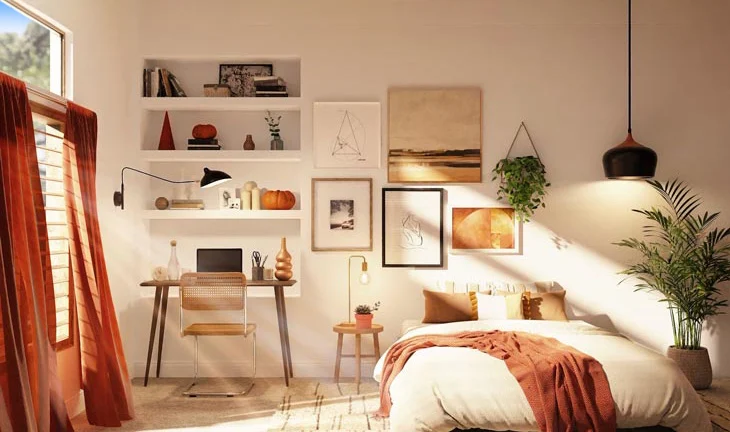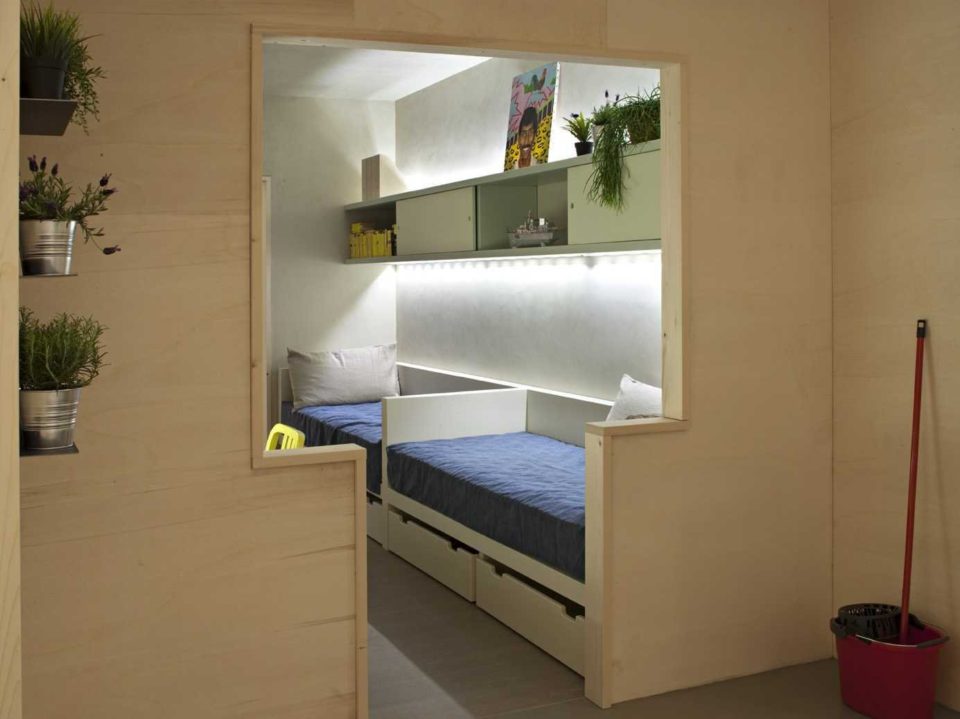As more and more people move to cities, the typical living space in cities is getting smaller. The micro-apartment craze is not just a passing fad; it is a necessary and creative response to the need for cheap housing in desirable areas. But living in a small space requires a big change in how you think about your home. No more big rooms and too many things. Today, the only way to make high-density living work is to combine smart design with a dedication to Functional Minimalism. This strategy converts the problem of limited space into a creative benefit, showing that you may live large while living little.
The Philosophy: Where Form Meets Function
When it comes to designing micro-apartments, minimalism is more than just a style choice. It is a rigid plan for how things work that tells people what can come into and stay in the house. The main goal is to get rid of everything that isn’t needed, leaving a clean space where every item has a defined purpose. This clarity improves both physical space and mental health, turning a home that may be claustrophobic into a functioning, peaceful sanctuary.
LT Josai Shared House / Naruse Inokuma Architects. Image Masao Nishikawa
More isn’t Always Better
One of the main ideas behind this design philosophy is to be mindful of what you buy. There is no room for impulse buys or extra stuff when space is limited. Functional Minimalism makes people buy fewer things, but they are of better quality and last longer. Not only does this cut down on waste, but it also makes sure that the few pieces of furniture and decor that do exist are attractive, reliable, and made to last. This supports a sustainable, intentional way of life.
Appartement Spectral/BETILLON/DORVAL BORY, Image BETILLON/DORAL-BORY
The Strength of Being Intentional
Living in a tiny space encourages intentionality that goes beyond buying things. Residents have to be careful about how they use and arrange their area every day. Everything must earn its position. This ongoing curation process makes your home cleaner and more organized, which frees up mental energy and lowers the stress that comes with having too much stuff.
Learning How to Use the Multifunctional Interior
Flexibility is the key to getting the most out of micro-interiors. The best ways to make small spaces work are to think of walls and floors as surfaces that can change and adapt, not as permanent barriers. This means putting a lot of effort into making furniture that can easily switch between tasks, so that a single room can be a living room, dining room, bedroom, and office in just a few minutes.
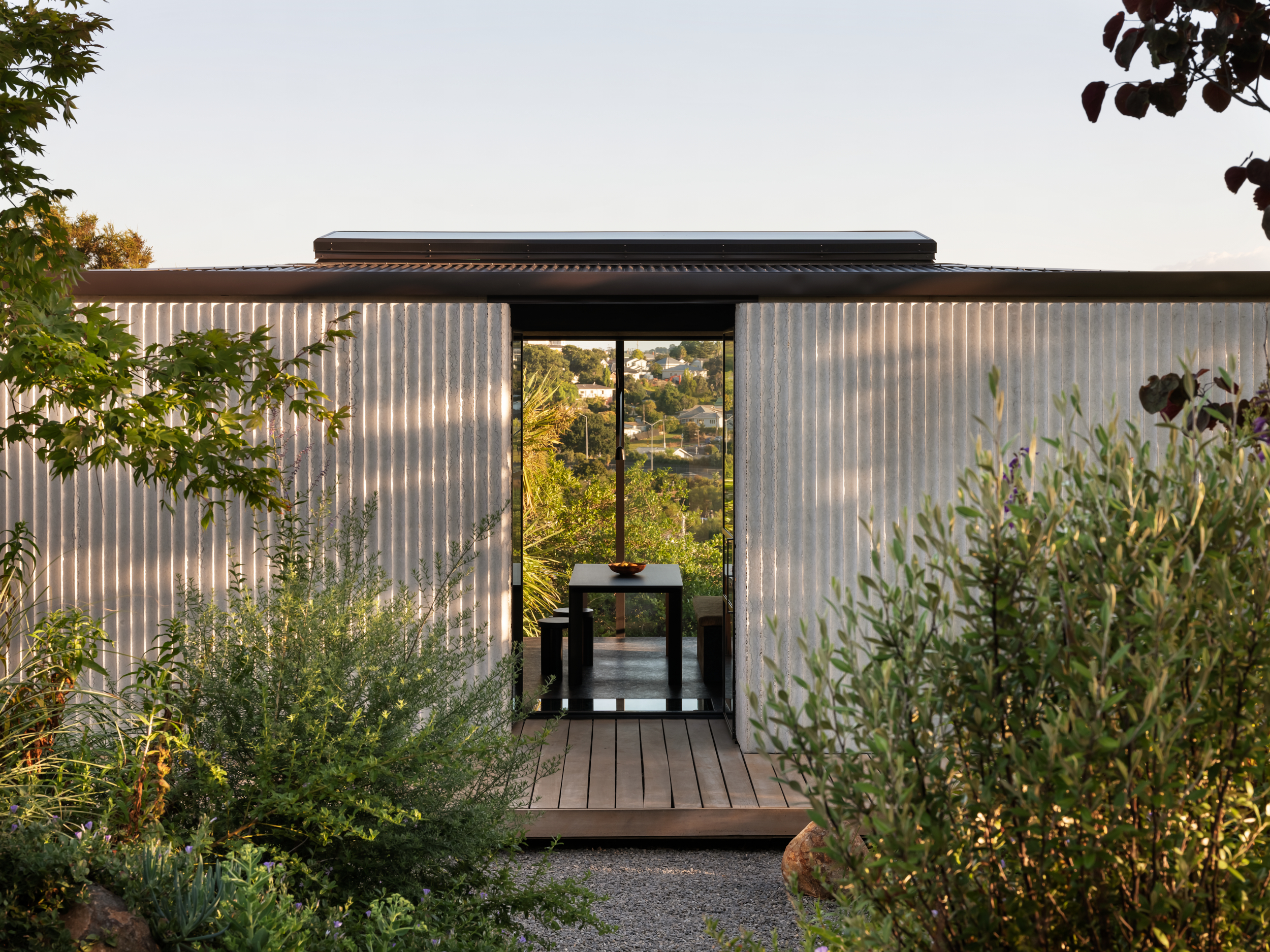
Lightly Weighted by Oli Booth Architecture with Libby Elmore. Auckland, New Zealand | Photo by Sam Hartnett.
The Toolkit for Changing
Multifunctional furniture is the best choice for living in a small space. These things save the most space:
- Wall Beds (Murphy Beds): Wall beds, often called Murphy beds, can turn a bedroom into a living room or office during the day, freeing up to 40 square feet of floor space.
- Convertible Tables: Look for dining tables that can be expanded and then folded down to make a console or desk, or coffee tables with lift tops that can be turned into higher eating or work surfaces with storage space underneath.
- Storage Ottomans & Benches: Storage ottomans and benches can be used as extra seats, footrests, or side tables. They also provide hidden storage for linens, books, or seasonal goods, which helps keep the space looking neat.
- Nesting Tables: A set of two or three tables that fit neatly within one other, giving you a flexible, portable surface for entertaining that you can put away when you’re done.
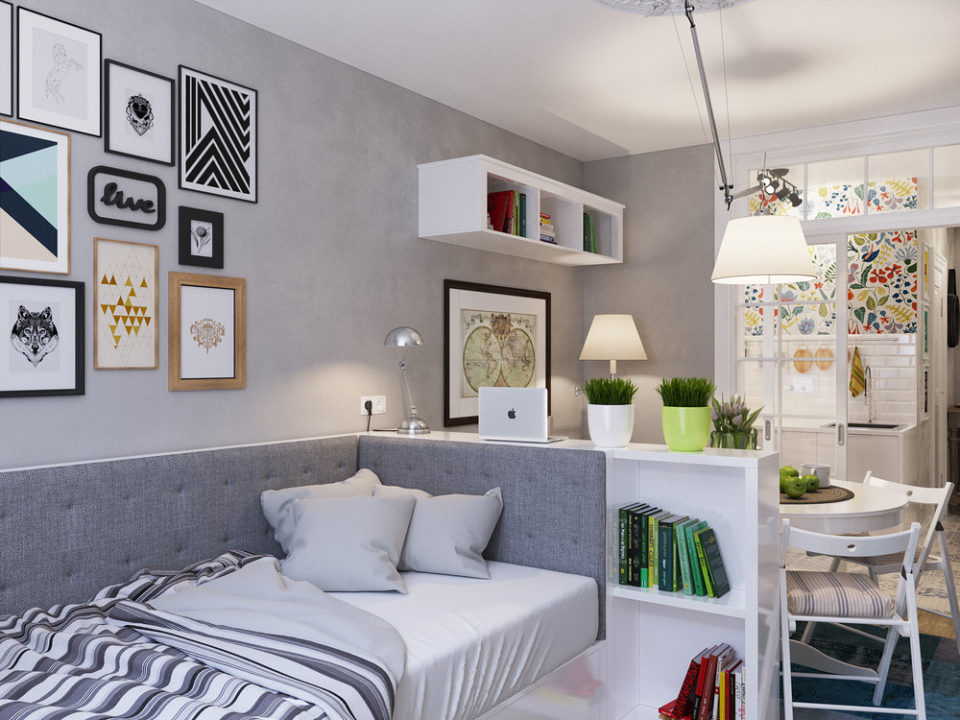 View in gallery via home-designing.com
View in gallery via home-designing.com
Verticality: The Unused Dimension
When there isn’t enough floor space, the only way to grow is up. Using vertical space is important for getting the most storage without making the room feel cramped.
- Floor-to-Ceiling Shelving: Tall, narrow bookshelves and cabinets that go from the floor to the ceiling attract the eye up and provide you a lot of room to store books, kitchenware, or clothes.
- Wall-placed Desks: Work surfaces that fold down or are placed on the wall can be put away after the workday is over, making more room on the floor.
- Lofted Beds: When you loft the bed in a taller unit, you make a whole new useful space below it. This is great for a home office or a second living area.
View in gallery
via Businessinsider.com
Aesthetic Clarity and Visual Illusions
How people see space is just as significant as the place itself. Minimalist interior design uses smart visual tricks to make a small home feel bigger, airier, and more open, which is important for mental comfort.
The Light and Neutral Color Scheme
A constant color scheme of light, neutral tones like whites, soft greys, and gentle beiges is the key to a successful micro-apartment. These colors bounce natural light across the room, which stops shadows that make a room feel smaller, and they provide a smooth flow of visual continuity from one “zone” to the next. Adding one or two contrasting textures or muted colors to this neutral space gives it the depth it needs without making it too busy.
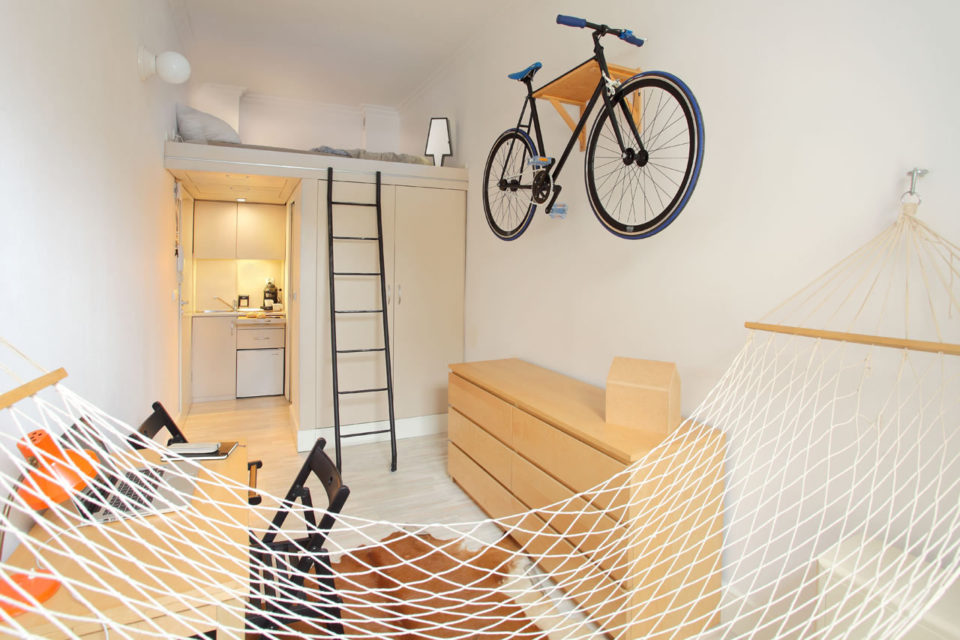 View in gallery via hanczar.com
View in gallery via hanczar.com
Smart Use of Light and Mirrors
Designers often use two main strategies to make space look bigger:
- Mirrors: A big mirror in the right spot can make a space look twice as big. When placed across from a window, it also reflects the most natural light deep into the apartment’s center.
- Open layouts: By getting rid of unneeded walls and employing sliding or see-through partitions instead of hinged doors, you may make rooms that flow and connect with each other. This transparency is really important to keep people from feeling trapped.
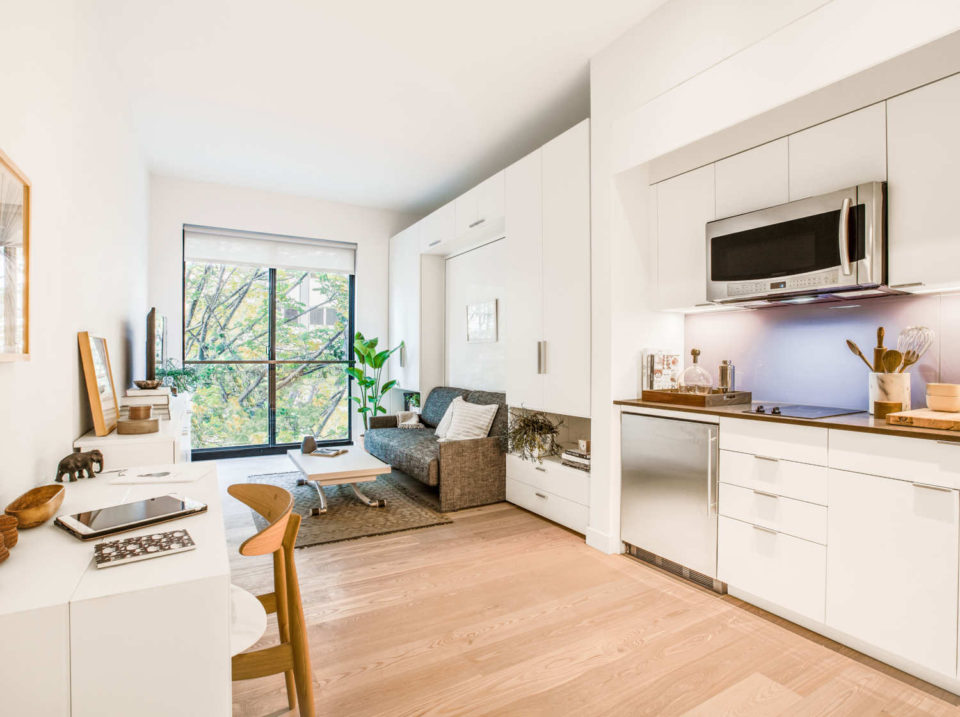
Choosing to live in a small space offers more than just a place to sleep; it also has big benefits for your lifestyle that fit with what people in cities want these days.
Freedom in Terms of Money and the Environment
Living in a smaller unit saves you money directly: your rent or mortgage payments will be cheaper, your utility expenses for heating and cooling will be much lower, and your maintenance costs will be lower. This financial freedom lets residents use their money for things that matter, like travel or investing. Also, smaller spaces need fewer resources to develop and keep up, which greatly lowers your overall environmental footprint.
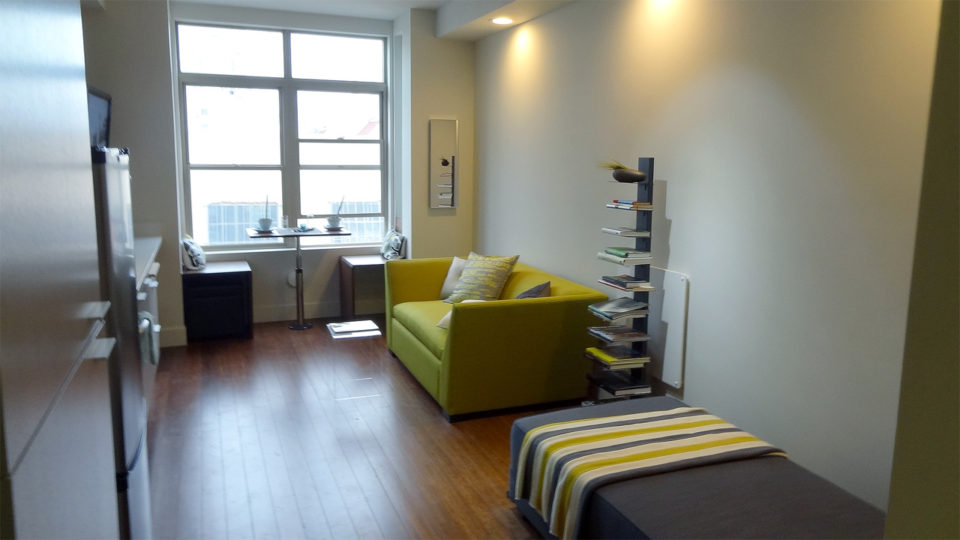 View in gallery via tested.com
View in gallery via tested.com
More Time for Experiences
Less stuff and less space in your life means less stress. It only takes a few minutes to clean a micro-apartment. You can spend the time you save on maintenance, buying, and organizing on hobbies, relationships, and experiencing the lively city neighborhood right outside your door. Because of the limits of the home, people who live there are more likely to find their happiness and hobbies outside of it.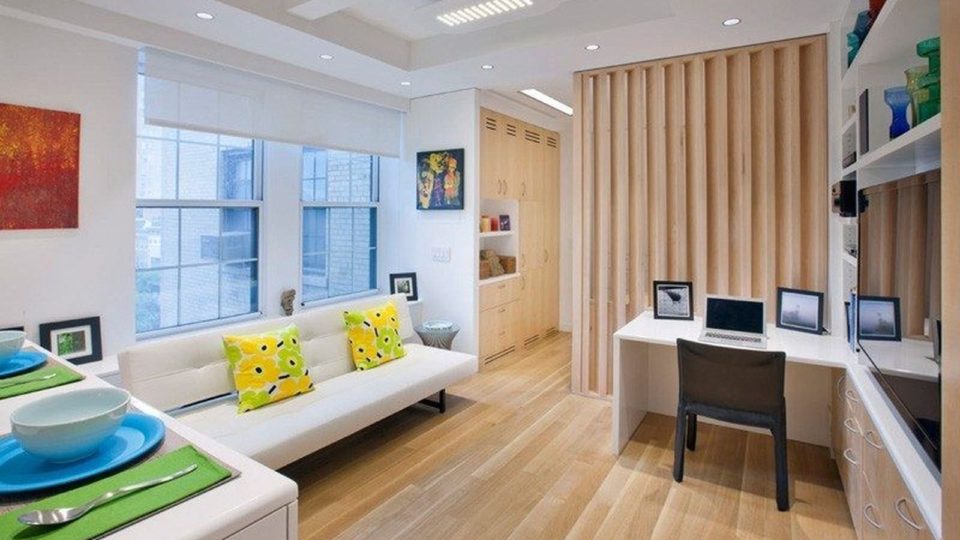 View in gallery via ny.curbed.com
View in gallery via ny.curbed.com
Conclusion: Changing What It Means to “Live Large”
The trend toward micro-apartments shows that quality of life isn’t about how many square feet you have, but how well you design your space and what you want to do with it. People who live in high-density areas are making places of order and peace by using Functional Minimalism.
These homes are not compromises; they are the best solutions because they are smart, have good furniture, and make the most of the space they have. They show that in the modern city’s busy, complicated environment, living with less is, without a doubt, living with more.
FAQs: Answers to Your Questions About Micro-Apartment Design
Q: How can I make my little flat feel less crowded?
A: To make the most of natural light, use mirrors to add depth, choose light and neutral colors, and choose furniture that doesn’t block sightlines (for example, clear furniture or pieces with thin legs).
Q: What is the most crucial piece of furniture for a small apartment?
A: Multifunctional furniture, like a Murphy bed or an inflatable dining table, is the best way to get the most use out of your space and be flexible.
Q: What should I do about clutter when I don’t have much storage?
A: Follow the “one in, one out” guideline. Use furniture with built-in, concealed compartments (like storage ottomans and lift-up beds) and make the most of vertical storage (such tall shelves and lofted storage).
Reference:
Mastering Minimalist Apartment Design Focusing on Stylish Simplicity for Modern Living
Micro Apartments & Minimalistic Living: The Next Big Thing? – BFPM
For more content like this CLICK HERE!!

